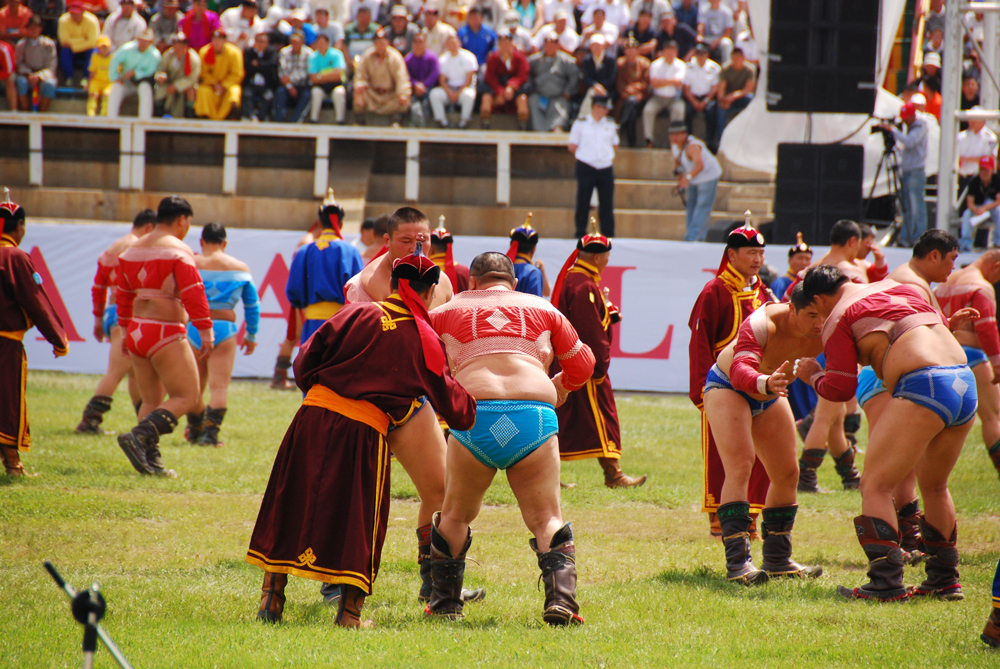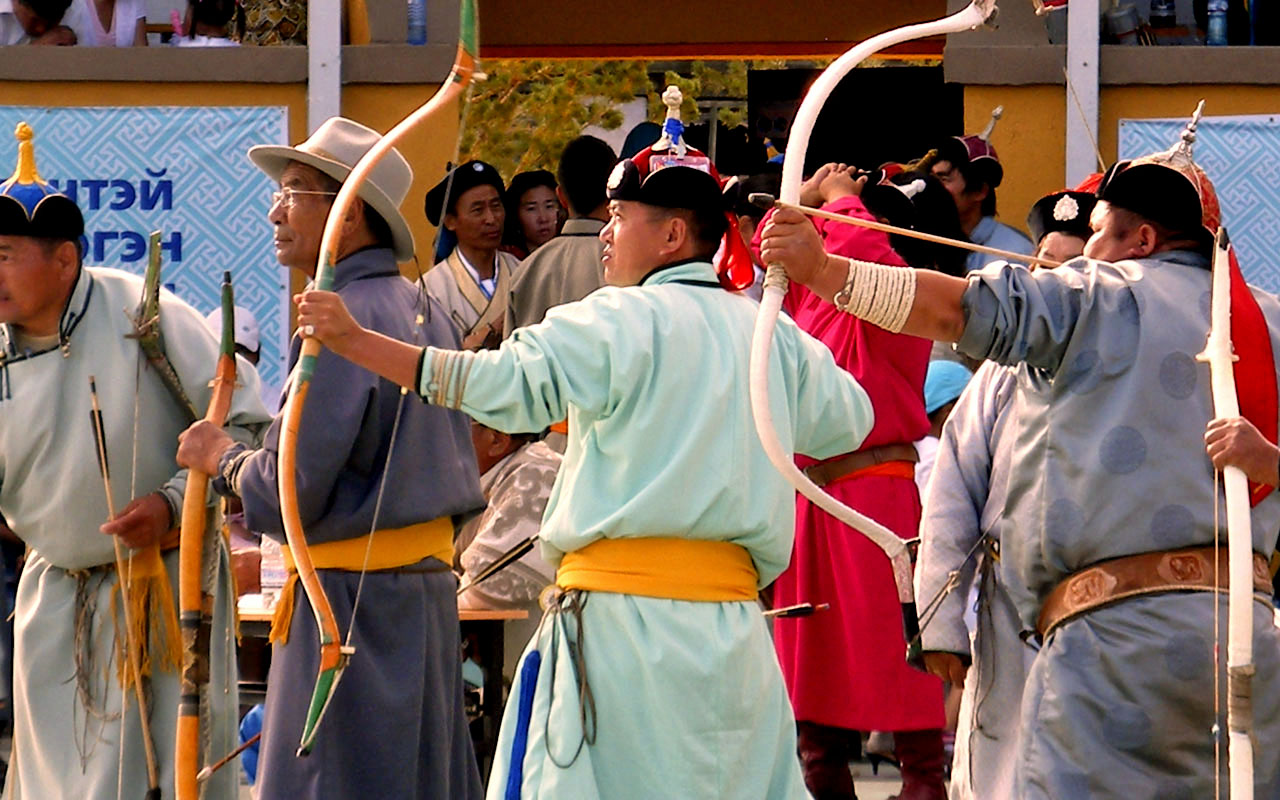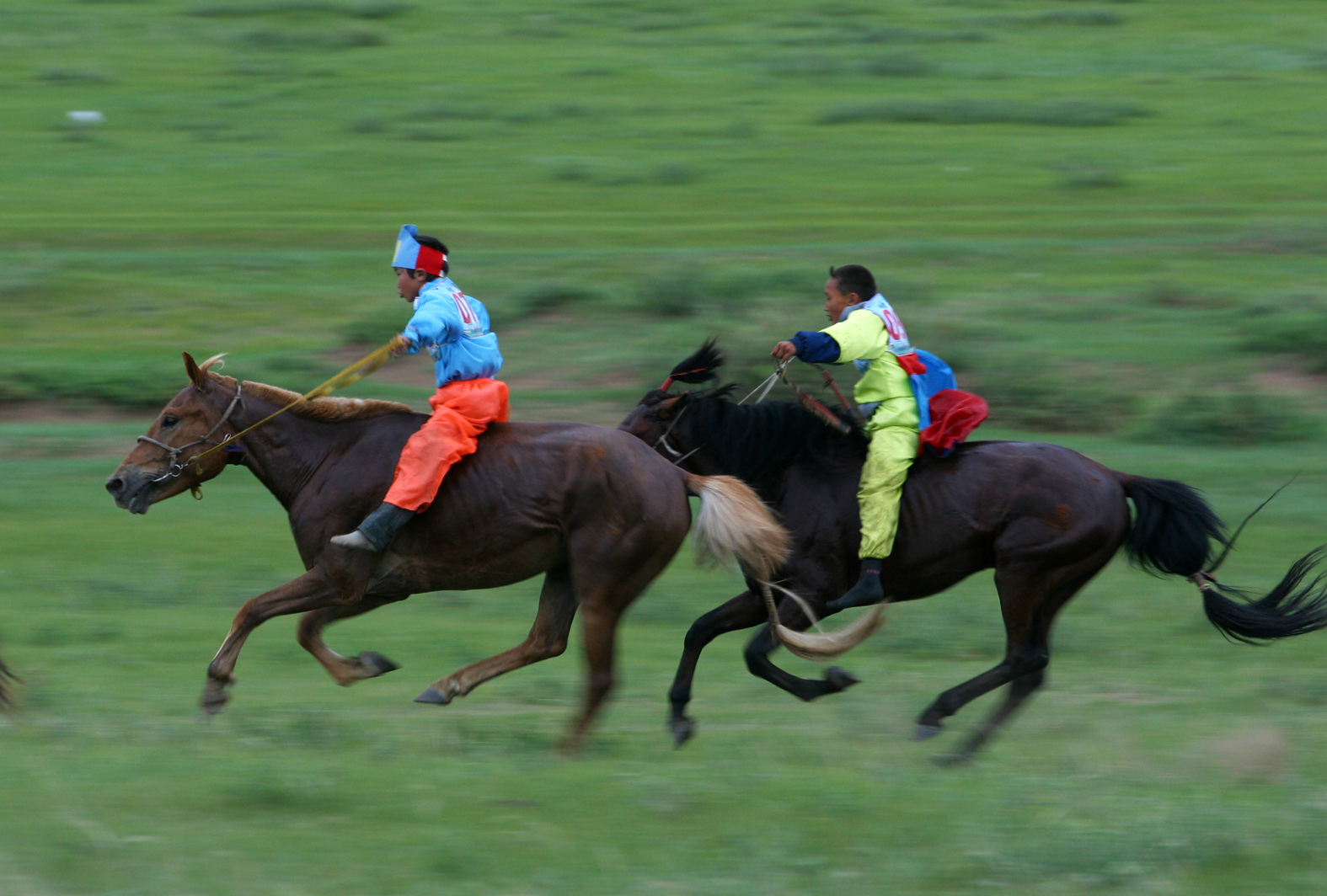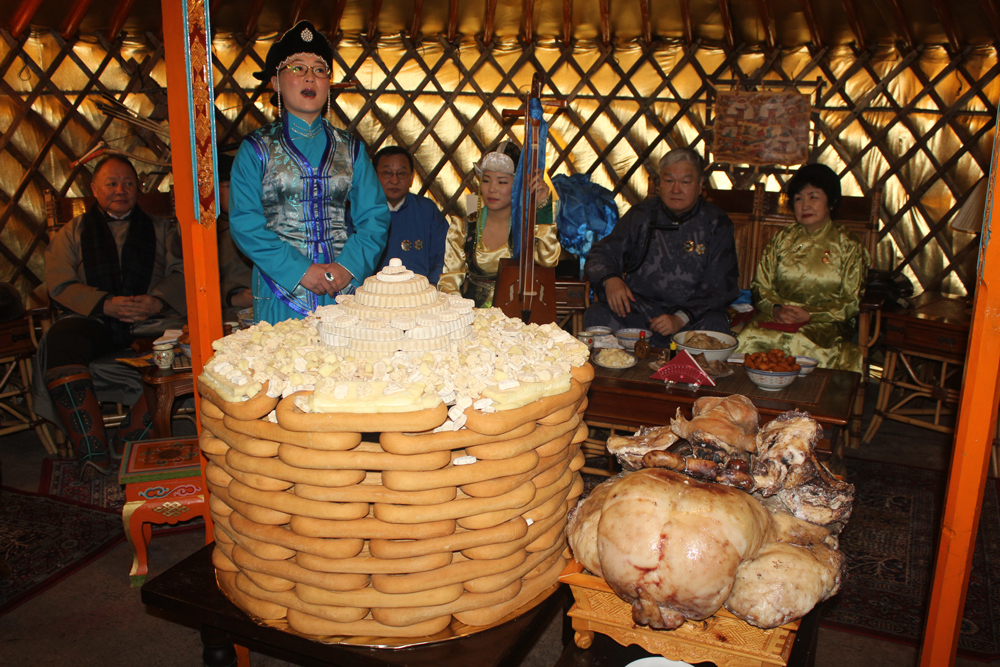
Numerous holidays and events exist in Mongolia. To travel in Mongolia during festival periods is the once-in-a-lifetime opportunity.
Between Tsagaan Sar, the family holiday, and Naadam, national day festivities, the Eagle festival in the west, discover these holidays which make Mongolia a cultural land.
THE GREAT NAADAM FESTIVAL

The biggest event of the year in Mongolia is the Great Naadam Festival, known as the ‘Eriin Gurvan Naadam’ after the three ‘manly sports’ of wrestling, archery and horse racing. The Great Naadam Festival ranked as the 6 th biggest festival in the world, was inscribed in 2010 of UNESCO as a Representative List of Intangible Cultural Heritage of Humanity. It was celebrated for centuries as a test of courage and strength of nomadic people and warriors. The Naadam festival is held every year in July 11-13th at the Central stadium in Ulaanbaatar, in mean time every towns and villages through the country celebrate their own.
Wrestling

Mongolian wrestling is similar to wrestling found elsewhere, except there are no weight divisions, so the biggest wrestlers are often the best. Mongolian wrestling also has no time limit- the bout will continue with short breaks. It will end only when the first wrestler falls, or when anything other than the soles of the feet or open palms touch the ground.
Before each elimination bout, wrestlers limber up and honour the judges and their individual attendants (zasuul) with a short dance called a devekh, or 'eagle dance'. After the bout, the loser must perform the takhimaa ogokh, walking under the right arm of the winner, who then makes a lap of honour around the flag on a pedestal and does some more eagle dancing. The gesture signifies peace between the two wrestlers.
Wrestlers wear heavy boots called gutul- similar to the traditional boots worn by ordinary Mongolians. The tight pants are called shuudag, and the small vest across the shoulders is a zodog. Winners are bestowed glorious titles depending on how many rounds they win. These are nachin (falcon) - five rounds; zaan (elephant) -seven rounds; and arslan (lion) - given to the winner of the tournament. When an arslan, or lion, wins two years in a row he becomes avarga, or titan.
Archery

Like horse racing, the sport of archery originates from the warring era, starting from around the 11th century. In this competition both men and women participate. It is played by teams of ten. Each archer is given four arrows; the team must hit 33 "surs". Men shoot their arrows from 75 meters away while women shoot theirs from 65 meters away. Traditionally the archers wear their national clothing Deel during the competition. All the archers wear leather bracers up to the elbow on their outstretched arm, so that the deel’s cuff does not interfere with shooting. Mongolian archery is unique for having not only one target, but dozens of surs. Each sur is a small woven or wooden cylinder. They are placed one on top another forming a wall 3-high, which is approximately 8 inches high by 5 feet wide. Knocking a sur out of the wall with an arrow counts as a hit, though knocking a sur out of the centre will bring you more points. When the archer hits the target the judge says uuhai which means "hooray". After each hit, an official repairs the damaged wall and makes it ready for the next attempt. The winners of the contest are granted the titles of "national marksman" and "national markswoman".
Horse racing

There are normally six categories of horse racing, depending on the age of horses: for example, a two-year-old horse, called a daaga, will race for 15km, while six and seven-year-old azrag and ikh nas horses race for up to 30km.
Jockeys - boys and girls aged between six and 11 years old - prepare for months for special races, particularly at Naadam. Horses are fed a special diet for weeks beforehand.
Before a race, the audience, all decked out in traditional finery, often sings traditional songs. The young riders sing a traditional anthem called a gingo before the race, and scream 'goog' at the horses during the race.)
The winner is declared tumnii ekh, or 'leader of ten thousand'. Riders and spectators rush to comb the sweat off a winning horse with a scraper traditionally made from a pelican's beak. The five winning horses are admired and talked about in reverence by the crowd, and traditional poems are read out, extolling the virtues of the riders and trainers. The five winning riders must drink some special airag, which is then often sprinkled on the riders' heads and on the horses' backsides.
MONGOLIAN LUNAR NEW YEAR-TSAGAAN SAR

All of Mongolian celebrate the Lunar New Year, which is called in Mongolia “Tsagaan Sar” or the “White Moon”. Every year Tsagaan Sar become in different days, depending on the Lunar calendar, but usually it’s in January or in February. Families start preparing for the holiday at least a month in advance. First of all there is a tradition to prepare plenty of gifts and food. Every Mongolian family makes hundreds of Buuz (steamed dumplings) and sews or buys new clothes. According to custom, the fattest sheep should be slaughtered and the rump and tail boiled and served on the table for the entire holiday as an honorable meal. Tsagaan Sar is symbol of wealth and prosperity in the family. The New Year’s Eve is called Bituun – the last dinner of the old year. Beginning at noon, the wife starts cleaning the GER. Everything must be spotless. Then the table, the centre place of celebrations is laid with several dishes – the boiled sheep’s rump, a dish with traditional bread biscuits, a dish of Beres (the vegetarian meal that, cooked rice with butter, sugar and raisin) and a dish with traditional milk products (dried curd, cheese and cream). All these dishes should be eaten that evening after the stars have come out.
NOMAD’S DAY FESTIVAL

This exciting Nomadic festival of Mongolia is held annually on 17 and 18 September in the amazing nature reserve of Gun-Galuut. This fantastic cultural event is one of the biggest and most colorful festivals of Mongolian nomads and gives the best chance to experience the true Mongolian nomadic culture, traditions and customs within only 2 days. You will meet real nomads in their traditional costumes and competing with their incredible knowledge on nomadic traditions, witness young nomadic kids showing off their mental capacity, see the contest of traditionally dressed beautiful nomadic couples, see a thrilling folk concert of various nomadic groups and will be treated with mouth-watering steppe delicacies. This fabulous festival will allow you to take part in the mini version of magnificent Naadam festival so called the 2nd old Olympic Games featuring the unique traditional Mongolian sports: archery, horse racing and wrestling.





